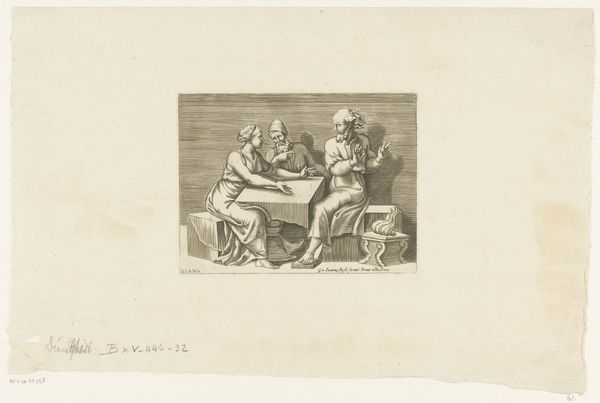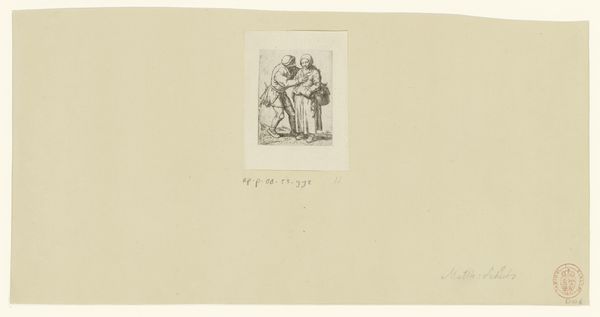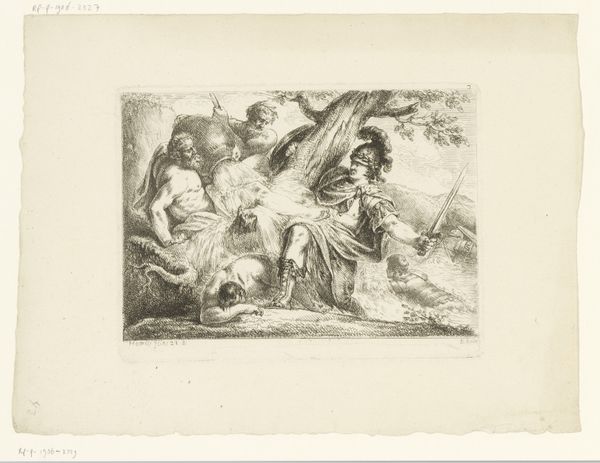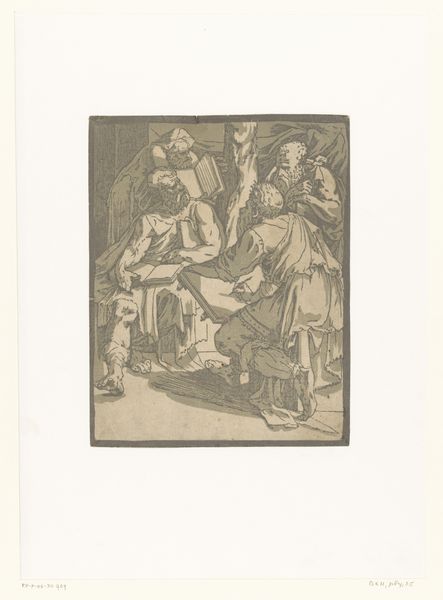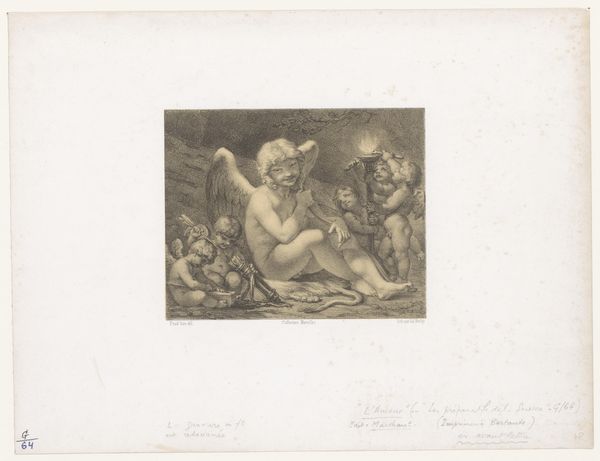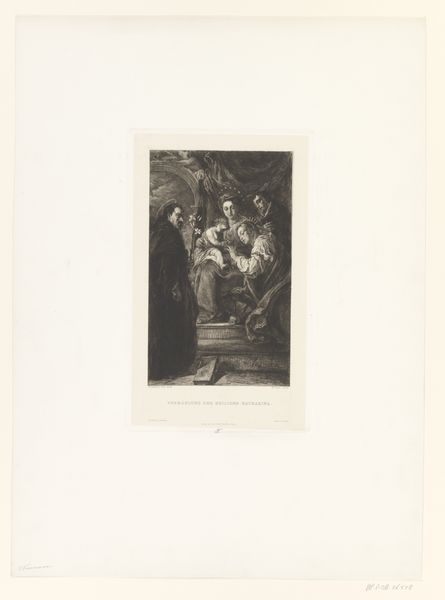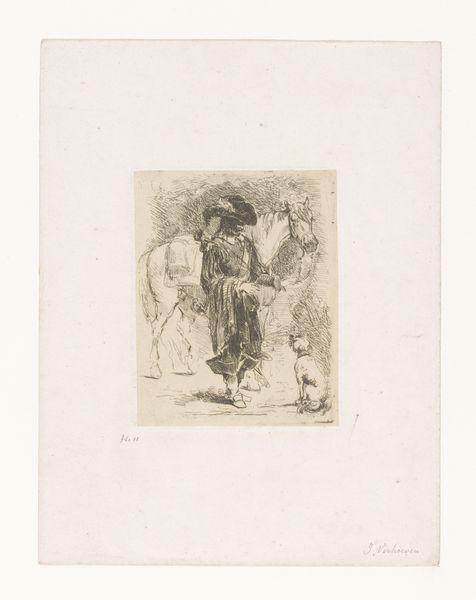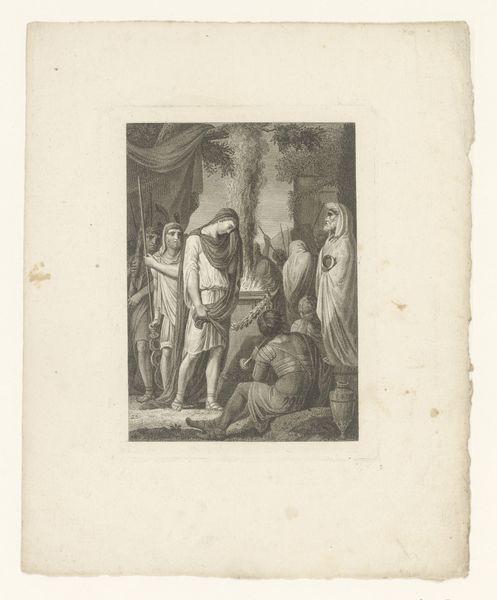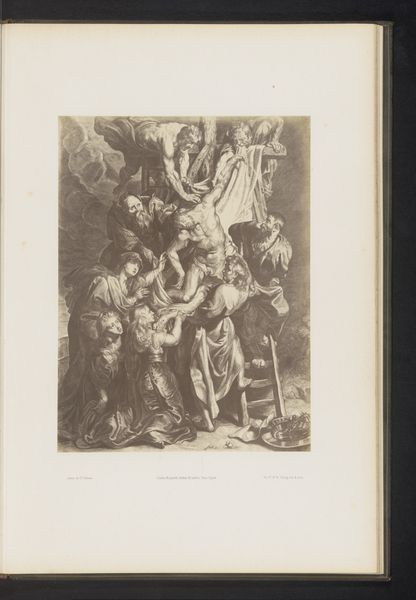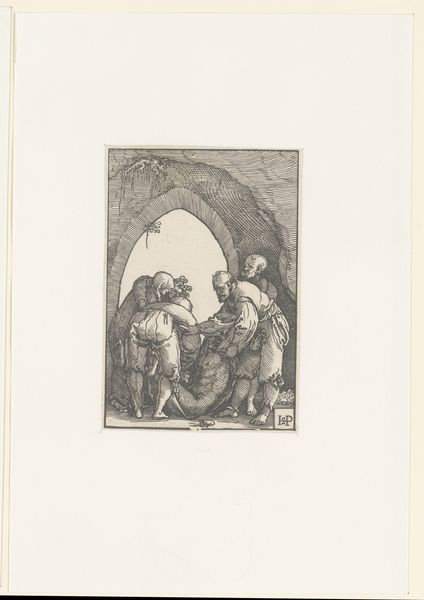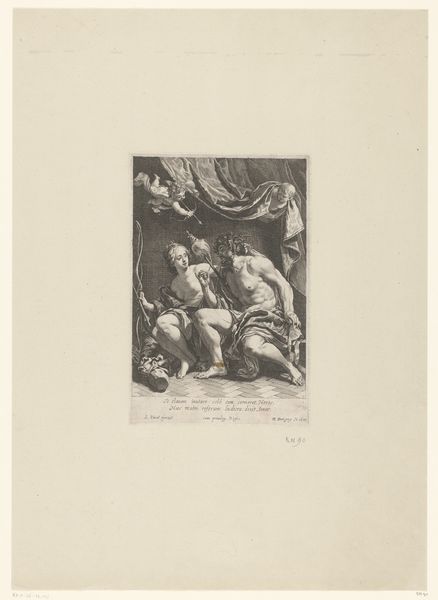
drawing, print, ink
#
drawing
#
baroque
# print
#
figuration
#
ink
#
genre-painting
Dimensions: height 140 mm, width 189 mm
Copyright: Rijks Museum: Open Domain
Curator: This is "Bacchanaal met vijf kinderen," a drawing, likely an ink print, created by Zacharie Heince around 1630 to 1635. Editor: It’s quite charming, a bit rough around the edges. The texture created by the printmaking process gives it a kind of raw, playful energy. It’s as though the artist quickly captured a fleeting moment of childlike revelry. Curator: The imagery certainly suggests that. The scene depicts what appears to be a celebration associated with Bacchus, the Roman god of wine, fertility, and theatre. Looking at this, one cannot overlook how gender, power, and social structures intersect here. Children, who at that time had limited social power, are staged as active subjects in what reads as a festive, potentially transgressive ritual. What does that tell us? Editor: Well, considering the period, this could be a visual expression tied to larger questions regarding the social function of art in the early Baroque era. Religious themes were still prevalent, but increasingly, we see the art world dabbling in classical subjects in ways that weren't simply academic recreations. The children mimic adult rituals. They playfully turn convention on its head, challenging notions about order and piety. Curator: I agree. The inscription partially visible hints toward wider commentary, and in what appears to be an aristocratic display, the consumption of grapes and a wine god connection serves to underscore themes related to class, consumption, and the spectacle. The fact that it's reproduced as a print also indicates the importance of distributing ideas. Editor: The print also serves a critical purpose; this artwork has a chance to be displayed and discussed within several environments, opening pathways to art audiences, but also to critical audiences. It's interesting how the softness of the line work contrasts so strikingly with the very structured themes on display. Curator: Precisely. Considering it was produced amidst widespread social upheaval and conflict, perhaps its seeming innocence hints at an underlying yearning for a less rigid society, and its wide dissemination offers us insight into shared, if not publicly stated desires. Editor: This close examination has highlighted an intersection of visual charm and intellectual curiosity. Curator: It highlights how social and personal histories intersect to affect its role and production within the political spectrum.
Comments
No comments
Be the first to comment and join the conversation on the ultimate creative platform.
